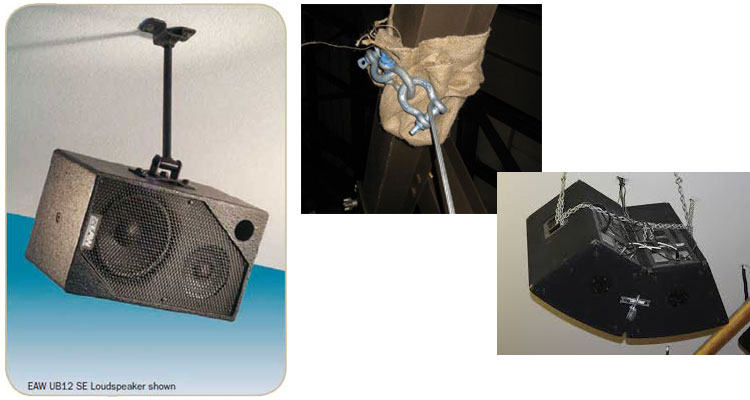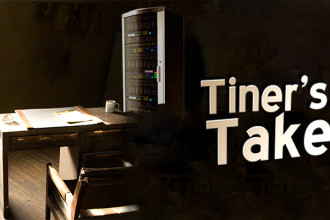InfoComm: Progress in Live Event Safety
This column was reprinted with permission from InfoComm International and originally appeared here.

By Dan Daley
Recent years have seen a rise in the number and severity of life-safety disasters at live events, particularly in the concert-touring sector. In 2011 alone, the industry had to contend with storm-related disasters at the Indianapolis State Fair, where seven concert-goers died; the Pukkelpop Festival in Belgium, where five died; and the Ottawa Blues Fest where one person died when wind knocked down the main stage.
This year, the mayhem has not been as intense. Nonetheless a crew member died at the Radiohead show at Downsview Park in Toronto in June when wind caused some rigging to fail. Meteorological-related dangers have become so ubiquitous and so headline-grabbing that more events now err on the side of caution, such the Black Eyed Peas concert in New York’s Central Park last summer, which was rescheduled due to the threat of violent weather. However, such measures irritate and alienate concert-goers, cutting revenues for promoters, artists and AV systems vendors.
Two initiatives currently underway seek to codify — formally, if not unofficially — the myriad regulations, codes and resources that live event producers and participants must or should reference in the course of doing business.
The Event Safety Alliance (ESA), a U.S.-based group of about 600 industry members, ranging from manufacturers to riggers and touring production managers, is trying to adapt the so-called Purple Guide, which is a collection of best practices and resources (more prosaically titled the Event Safety Guide) issued by the Health and Safety Executive (HSE), a non-departmental public body in the U.K. The group expects the first iteration of an Americanized version of the guide to be available by Feb. 1 2013.
In addition, PLASA, the international membership body for those who supply technologies and services to the event, entertainment and installation industries, is nearly finished with its most recent review of two critical safety standards: one covering temporary ground-supported roof structures for event stages (ANSI E1.21), and the other for the design, manufacture and use of aluminum trusses and towers (ANSI 1.2). Both standards have been put out for public (read: industry) comment. Karl Ruling, technical standards manager at PLASA, says ANSI E1.21 has drawn the most suggestions.
“It was originally intended to address the roof over temporary structures, but it may be extended to include speaker towers, and towers in the audience for sound mixing or follow spots, for instance,” he says. The standard may also extend to include stages that are part of any structure that is also used to support a roof or truss over it. “We’ve had no problems with stages actually being lifted up by high winds, but if the stage is part of the roof, which is more vulnerable to wind, then this would address that.”
The Road Map
Jim Digby wears two hats: He is the production manager for the band Linkin Park and he’s also coordinating the adaptation of the U.S. version of the Purple Guide as ESA’s executive director. The U.S. version has neither a publisher yet nor an official title (they’ve knocked around variations on the color theme of the U.K. guide, which is named for its purple-colored pages). It will contain links to U.S. agencies and organizations, including OSHA, the National Fire Protection Association (NFPA) and stagehands union IATSE, that offer guidance on various aspects of live event safety, making it what Digby calls a “field manual” for an industry that has, until now, been at the mercy of information scattered across thousands of local codes and regulations.
“What this will do is point someone right to the correct agency or appropriate PLASA standard,” he says. “It will collate all of the best practices and other resources in a single place and make them easily findable and readily available for all live-event professionals. The Purple Guide was really kind of a shortcut for us, a road map to lay it out for the U.S.”
What it won’t be able to do it compel anyone to read it or put its recommendations into actual practice. Most of these standards and practices don’t carry the weight of law or professional organizational mandates.
“All of this is voluntary,” says Ruling, who says that these initiatives have to be careful not to give the appearance of being statutes or encouraging of local legislatures to punch up their own regulations.
Says Digby, “This is an industry that has gone unstandardized to a large degree for years. We have to make it clear that we’re not trying to restrict creativity when it comes to tour production designs, but we also want to show that safety standards can come from within, from people who know the industry, rather than from legislation.”
Alternate Routes
While organizations continue to develop and refine safety standards for live events, weather remains the big X factor for event safety. Most of the damage and injuries at live events in the last five years have, at least in part, had meteorological causes, usually in the form of sudden high winds or torrential rainfall. Many weather scientists attribute the increase of instances of violent weather to climate change, and if they’re right, weather will continue to become a bigger problem for live events year after year. That said, references to climate change can incur political overtones. Jim Digby’s apolitical take on recent disasters is, “The weather has taken advantage of a lack of best practices in place.”
The findings of one report on the Indianapolis State Fair stage collapse cited backstage confusion and poor monitoring and interpretation of approaching weather as significant causes of loss of life and damage. Witt & Associates, a public safety and crisis management consulting firm based in Washington, D.C., reviewed the State Fair Commission’s report and found systemic failures in evacuating concertgoers at the first sign of a severe thunderstorm warning.
Some touring artists and event promoters are now using weather services that might give them more accurate hyper-local forecasting that would provide guidance and more time to take appropriate action. Weather Decision Technologies (WDT) sells dynamic, web-based and mobile interactive mapping solutions to media companies, but this year it also took on several high-profile concert-touring clients.
The 2012 Heart Tour, by the classic-rock band of the same name, will receive per-show, event-specific meteorological data under WDT’s event venue safety information service, WeatherOps. According to WDT’s press release, “During this tour, Heart concert venues will be closely monitored for extraordinary weather events, employing the WeatherOps… color-coded system, by which decisions regarding tour events, in relation to weather, will be made. In addition to adverse weather, production crews will receive daily updates regarding the forecast in the next tour stop, up to seven days in advance.”
WDT, whose offices are in Norman, Okla., within the Midwest’s famed and feared “Tornado Alley,” and in Atlanta, home to The Weather Channel, is also a sponsor of the ESA. The company’s senior vice president for enterprise solutions, David VandenHeuval, says the service is an adaptation of its WeatherOps program that WDT has had in place for venues for several years.
For touring artists, production managers supply WDT with an itinerary; the company evaluates the venues based on things such as type of construction, permanent or temporary stage types, roofed or open, and so on. That data is then added to ongoing monitoring of weather conditions in each itinerary location, up to and during the shows, and sent to tour managers’ mobile devices. When so-called trigger events occur, such as winds exceeding 25 miles per hour or lightning strikes within 6 miles of the venue, tour managers will implement predetermined actions that range from minimally interruptive, such as lowering a video screen, to ordering the show stopped and recommending the venue be evacuated. The cost of the service is scaled to the length of the tour.
“This is the first time this has been used by the artists themselves,” says VandenHeuval. Staging company Brown United, another ESA supporter, is also a client and has used Weather Ops on scores of shows over the summer, including the Wakursa and Lalapalooza music festivals.
In a variation on this, Linkin Park’s upcoming World Tour has been deemed “Storm Ready” by the National Weather Service, under that federal agency’s StormReady program, which is designed to enhance awareness, preparedness, response, recovery, emergency public notification, and public education related to hazardous weather events.
Digby says that the future of live-event safety will likely be a combination of industry-based standards, official resources and private-sector innovation. “It all has to come together to improve everyone’s safety,” he says.





